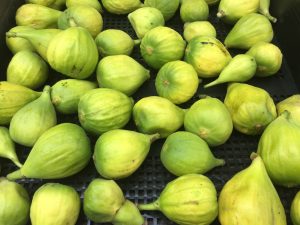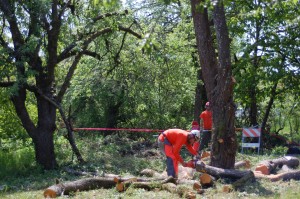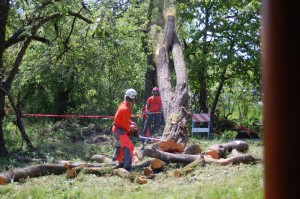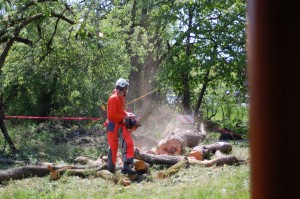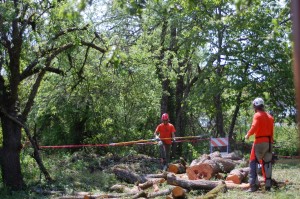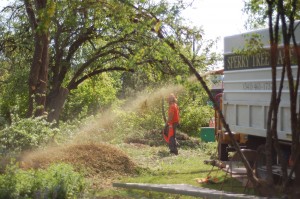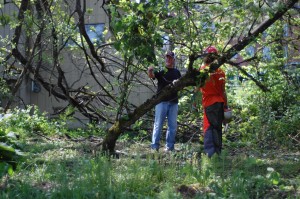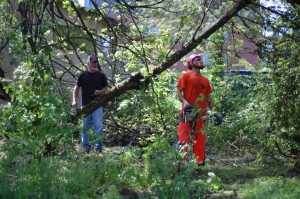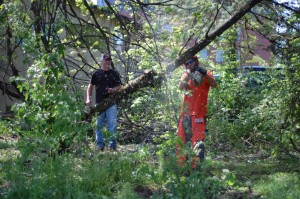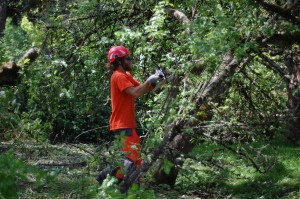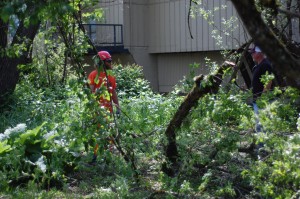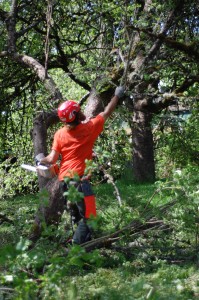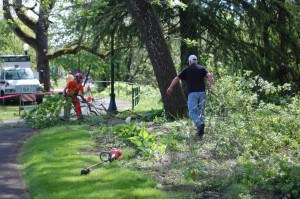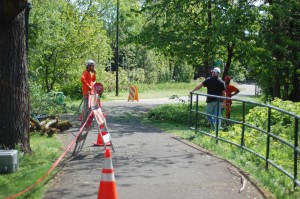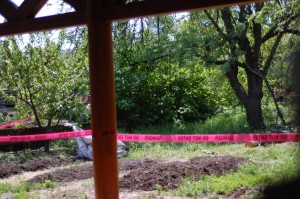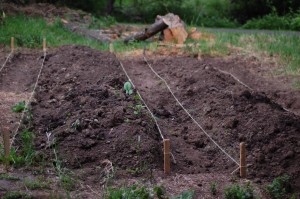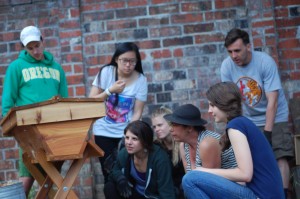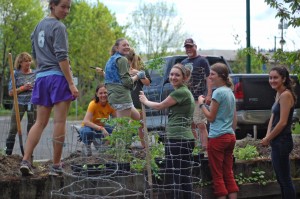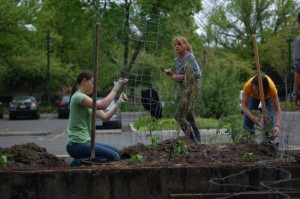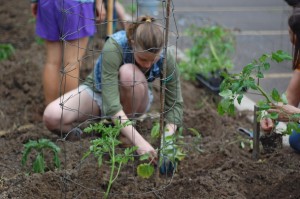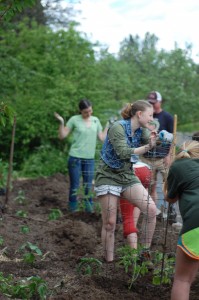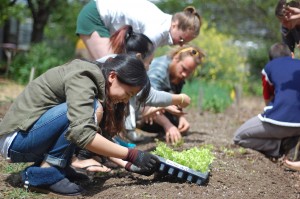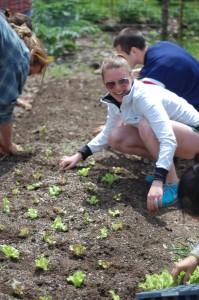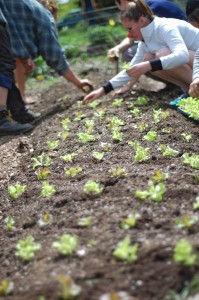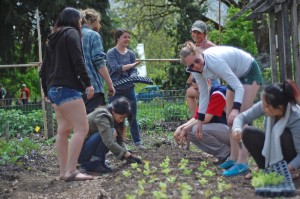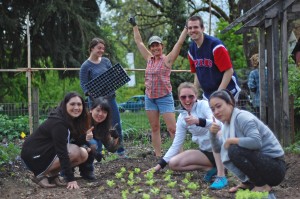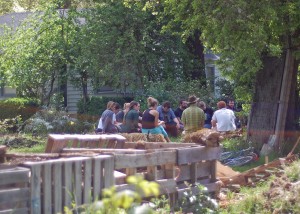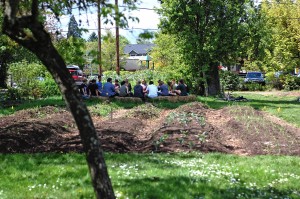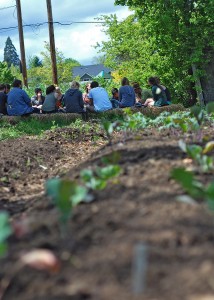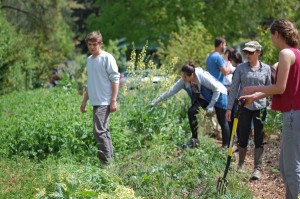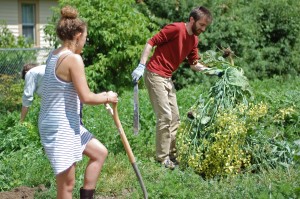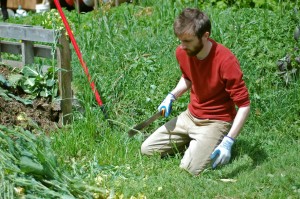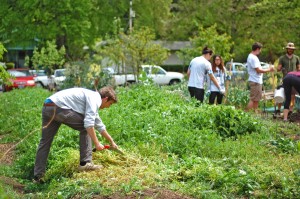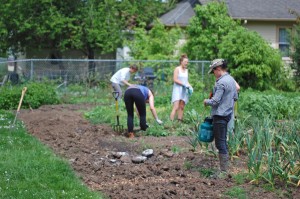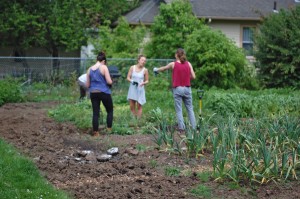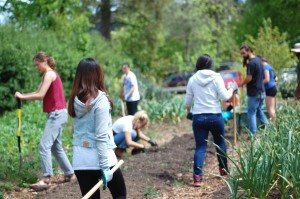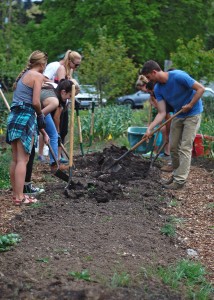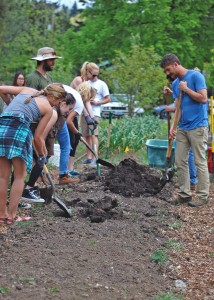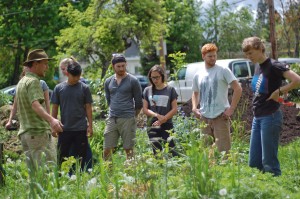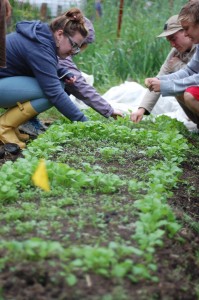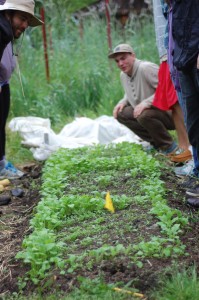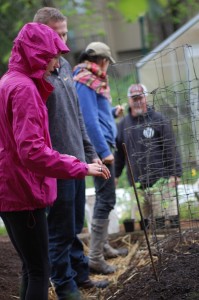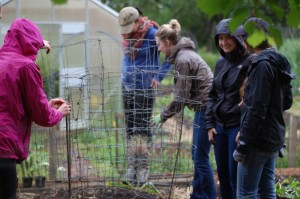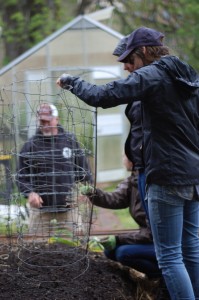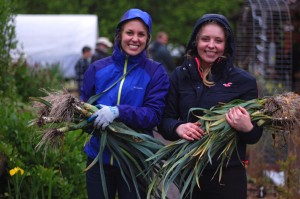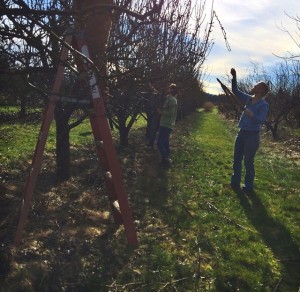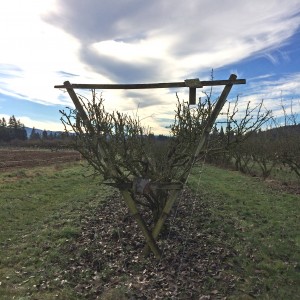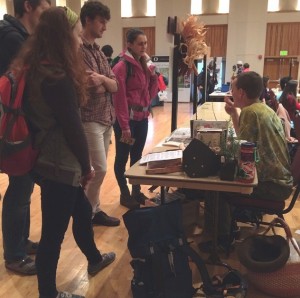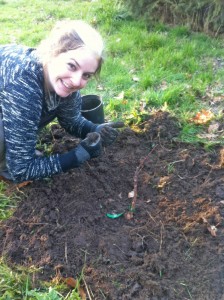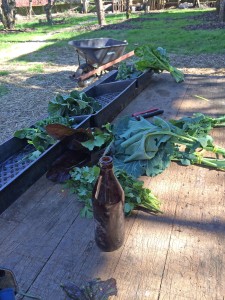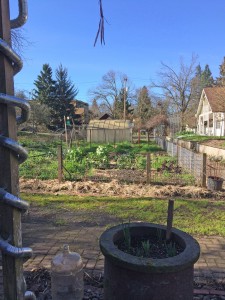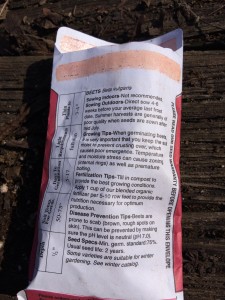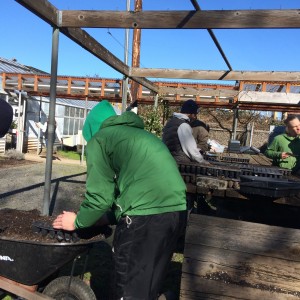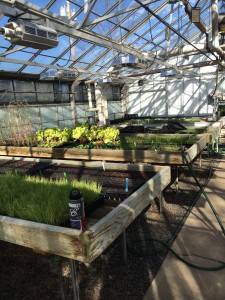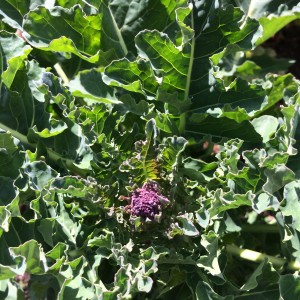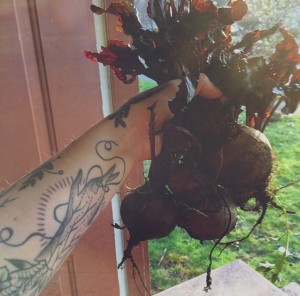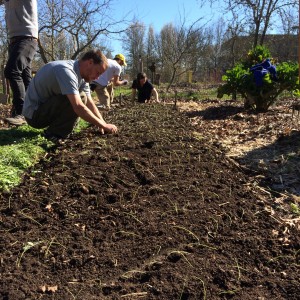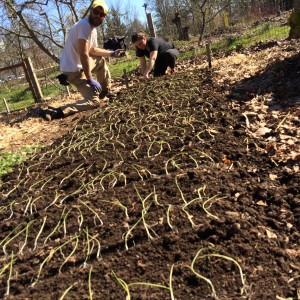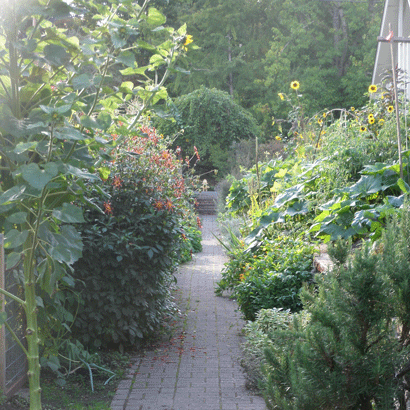The Urban Farm fig tree located right beside the club house is massive, and probably the coolest tree at the farm. When the tree begins to ripen near the end of summer with fresh figs, there has to be hundreds. This Summer we had a few students climb up to the tree and pick bucketfuls of ripe figs, a true treat.
Figs have a long and fascinating history with humans. The origin of the fig started in Asia, and eventually made its way to the Mediterranean area. It has been found to be used and cultivated by ancient peoples dating back to 5000 BC! Some even think it could be the oldest domesticated crop. WOW! It was first introduced to the United States in the 1400’s by Spanish missionaries. California was the place of introduction and this is where the vast majority of fig production still happens today in the USA.
The fig portion of the tree itself, the part that we eat, is actually a flower sac, or synconium. This is not a fruit, like many believe. The flower sac grows flowers internally. How this occurred is the stem grew out and created a sac where only female flowers grow inside. Due to this, they also do not rely on pollination to thrive and produce more.
Fig Facts:
- Can live up to 100 years and get to the height of 50 feet
- More than 750 different varieties
- Fig symbolism: peace, fertility, prosperity
- 1200+ species eat figs and is considered a keystone resource
- In 1892 Fig Newtons appeared on the market
- Figs used considered a healing plant and were used for their medicinal properties. Chimpanzees have been observed eating the bark and leaves (unusual food for chimps) and researches have thought that they are using these fig parts as self-medicating.
- Some think Eve ate a fig instead of an apple in the Garden of Eden
- Figs are loaded with calcium. Half a cup of figs is equivalent to half a cup of milk!
Check out some awesome fig recipes down below.
Here is a simple sweet breakfast or snack to make with fresh figs! Yogurt, figs, and honey…Yum!
Have you ever had a homemade fig newton? Even better than the kind from the store. Try it out yourself here.
Also, the fig just picked from the tree and eaten by itself is mouthwatering too. Just make sure it’s ripe! A fully ripe fig hangs down from the branch. If you look carefully, you’ll notice how the unripened greener figs stick out from the branches, whereas the riper ones droop down and have a yellowish tint to them. And lastly, feel the fig before picking. The ripest yellowish ones will be super soft and squishy, that is when they are perfect for eating. But don’t worry, if you happen to pick one when it is not all the way ripe, leave if for a few days and it will ripen off by itself.
Sources:
Shanahan, Mike. “Earth – The Tree That Shaped Human History.” BBC, BBC, 17 Jan. 2017, www.bbc.com/earth/story/20170116-the-tree-that-shaped-human-history.
Trowbridge Fillipone, Peggy. “Garden of Eden to Modern Day, Figs Tempt Humans With Sweetness.” The Spruce, The Spruce, 2 Feb. 2017, www.thespruce.com/history-of-figs-1807598.

